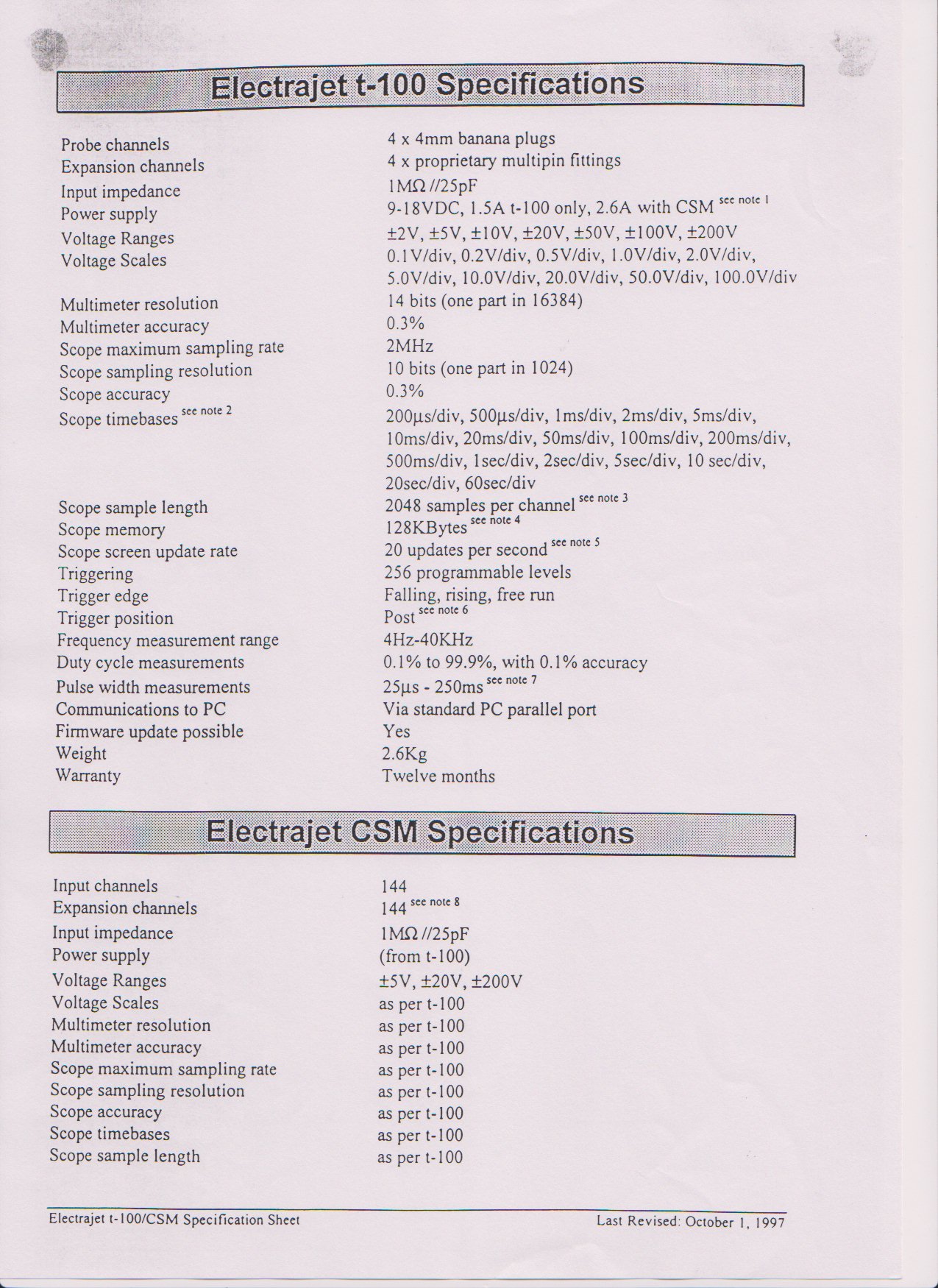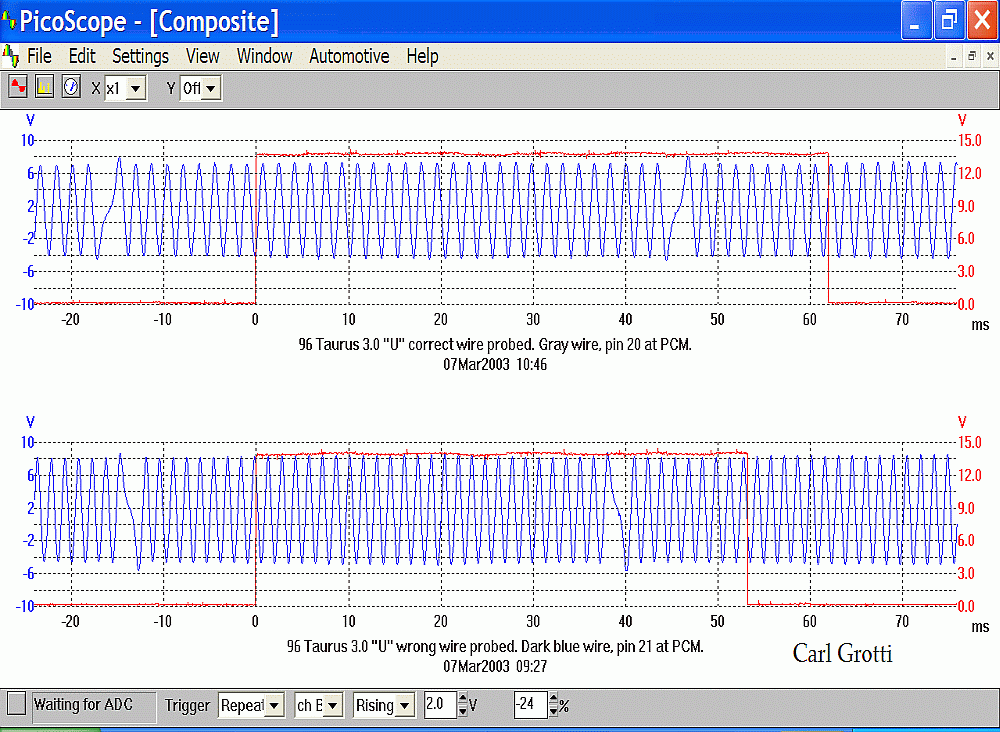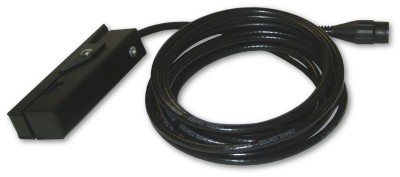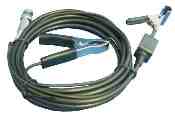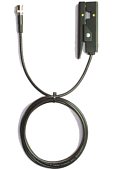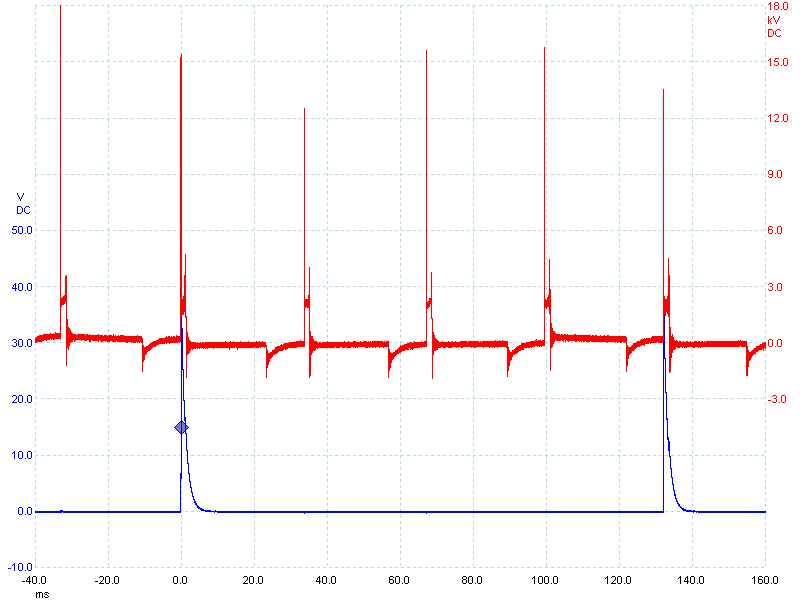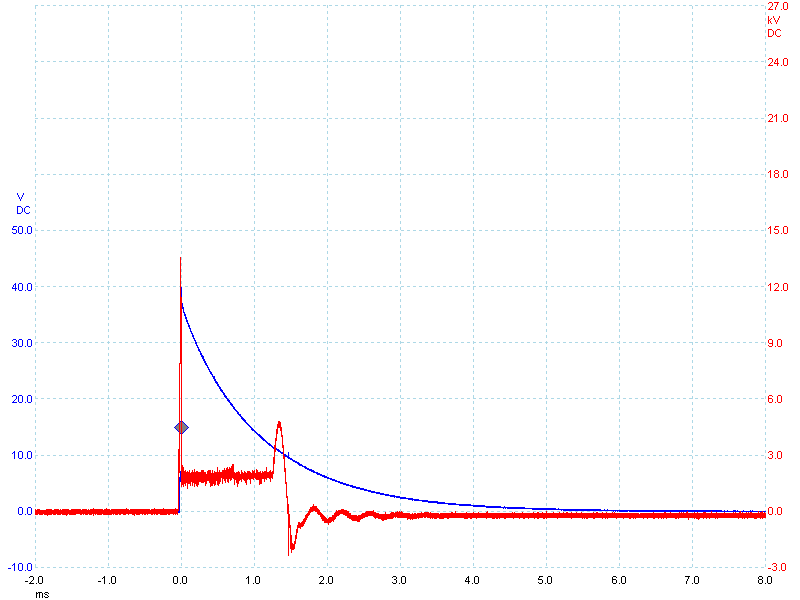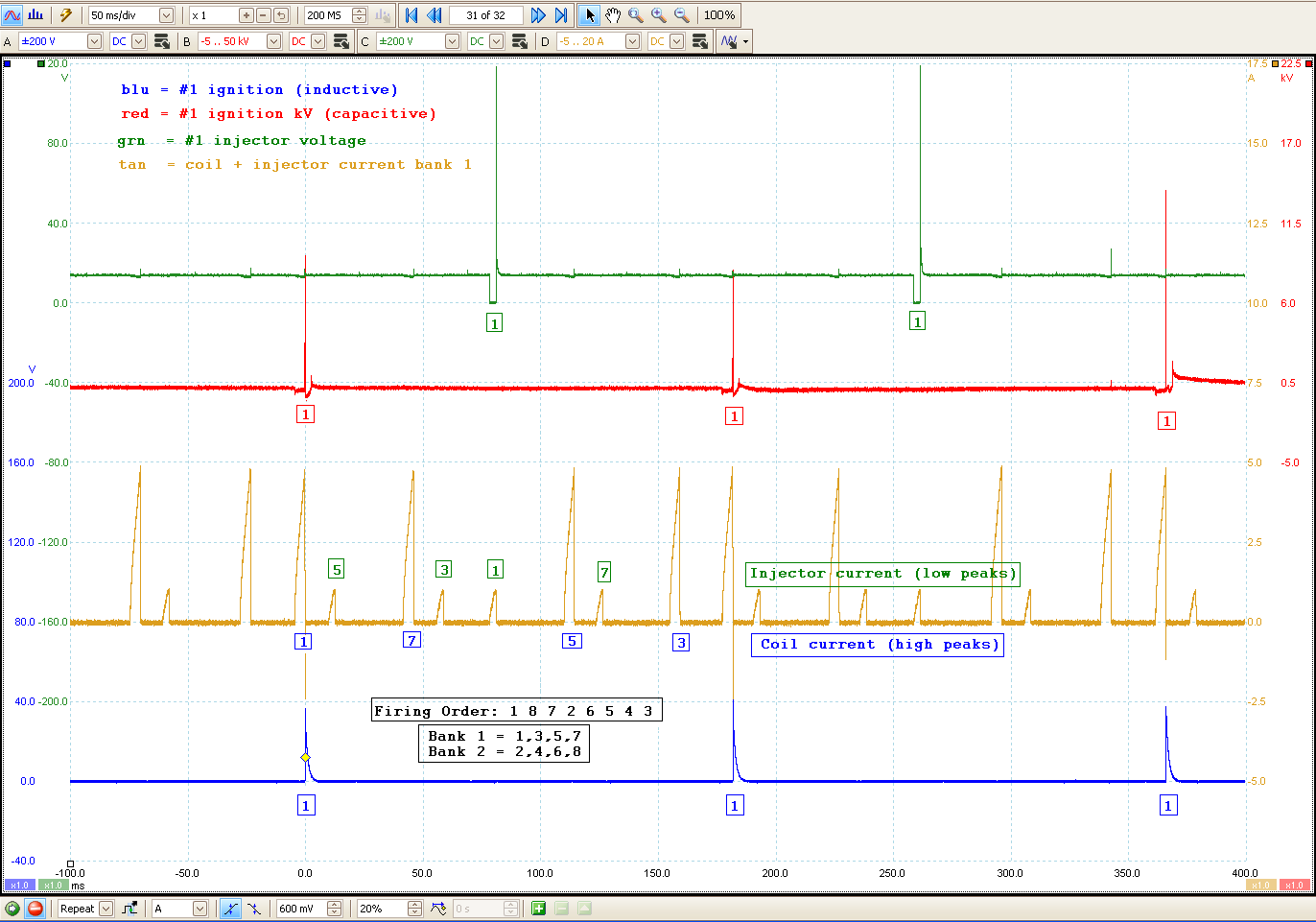Sam,
Just to clarify some things:
Merge Feature:
The merge feature that Samuel was talking about will be available on the next release of PicoScope 6 Automotive. Instead of being called merge function this will now be called reference waveforms. The attached picture shows the reference waveforms in action showing 3 of the exactly same crank waveforms displayed to give you an idea of the function. I quickly took a saved waveform and took the crank waveform from it and added it to another waveform from the scope. You can create known good ignition, crank, cam signals etc and save them as reference waveforms so you can quickly overlay them to determine if the pattern you are currently looking at falls within your good/bad parameters. You can have a maximum of 8 reference waveforms shown on one view. If you add more it will simply adds more views to view the additional reference waveforms.
Advanced Triggers:
Advanced triggers add greatly to the PicoScope functions available to the technician. Most advanced triggers that the PicoScope comes with are only available to oscilloscopes that are in the next realm of pricing compared to the PicoScope. Advanced triggers greatly improve the ability of the technician to capture the waveform that they are trying to get. Matt Fanslow of Pico Technology wrote a quip about advanced triggers that I would recommend reading. You can view that article at
http://www.wavehook.com/dbase/article.html?article=aff9e1bd469fc5142d1f5be1c8642ddd.
MixMaster Ignition Mixer:
Traditionally with the PicoScope you can view up to 4 different ignition signals at once (with the PS3423, 2 channels with the PS3223). With the MixMaster you may view up to 12 channels paraded across the screen. If you are interested in viewing paraded signals of all cylinders this piece of equipment makes it possible with the PicoScope.
FirstLook Sensor:
The FirstLook Sensor is a piezoelectric sensor that allows you to view slight changes in pressure. The way this sensor works is if there is no change in pressure the voltage does not change. As soon as there is a slight change this sensor detects it and you can view it. Common uses with it are to insert the FirstLook sensor into the exhaust pipe and view the pressure changes as each cylinder fires; also numerous people connect the unit to the vacuum port of the pressure regulator on the fuel injector rail and are able to see the pressure changes as each individual injector fires. I personally consider this an essential tool for diagnosis but, I would invest in Pico's now WPS500x pressure transducer (when it becomes available for shipment) as this is to do everything thing that the FirstLook does plus measure cylinder pressures etc.
Coil on Plug Probe:
Typically, on coil on plug systems, you are limited to simply current ramping etc to determine the status on the coil. Some people wish to be able to view the secondary pattern off the COP just like you can with traditional secondary ignition systems. To be able to do this Pico came out with the COP probe that allows you to capture the secondary patterns from COP systems. To capture the pattern you simply connect the COP probe to the PicoScope and touch the tip of the probe to the coil you wish to measure. This will take some learning however as each model of coil is insulated differently and hence the kV represented will have to be taken with a grain of salt. When comparing 8 individual coils on the same engine this is an excellent way to knock out a bad coil.
Universal Breakout Lead Set:
These leads come in small, medium and large with the medium and large fitting most pins on US vehicles. Essentially what these leads allow you to do is connect to a sensor with out the need to damage the connector by back probing. Most OEM's are putting in place ordinances where the technician can not back probe the sensor in fear of issues arising later in on in the vehicle life. With the breakout leads you can safely connect to the sensor and obtain its values without the fear of damaging its connectors. You can purchase the leads separately or all three sizes in a pack.
Needs that arise for the above additional tools at your disposal:
Mixmaster: This would vary person to person and on your diagnostic technique. People that use big box analyzers will find the MixMaster essential. Others will look first to their scan data and determine which cylinder is causing the issue and then inspect that cylinder first. Scan data should work hand in hand with scope data for proper diagnosis of customer complaints. If scan data doesn't point you in a direction, the MixMaster will come in handy in that instance.
FirstLook: The FirstLook sensor will allow you to verify which cylinder is causing the issue, and also depending on how you use it, if it is fuel, mechanical, or electrical. When used in the exhaust pipe and with an ignition trigger this can detect which cylinder is misfiring better than most scan tools. Refer to thompsonautolabs.com for more information on this subject.
Coil on Plug Probe: This comes down to personal diagnostic preference. It depends on if you are used to diagnosing ignition problems through secondary waveforms or other methods such as current patterns. If you are used to secondary waveforms and work on COP cars the COP probe is essential. If you are used to current patterns Pico sells quality low noise current clamps also.
Universal Breakout Lead Set:
The breakout lead set allow you to connect to almost all sensors on the common car today. You can purchase the breakout lead set or back probe the sensor and risk damaging the connector.
Regards,
Richard Boyd
 https://www.autonerdz.com/cgi/yabb2/YaBB.pl?action=downloadfile;file=
https://www.autonerdz.com/cgi/yabb2/YaBB.pl?action=downloadfile;file=ref.GIF (68 KB |
)
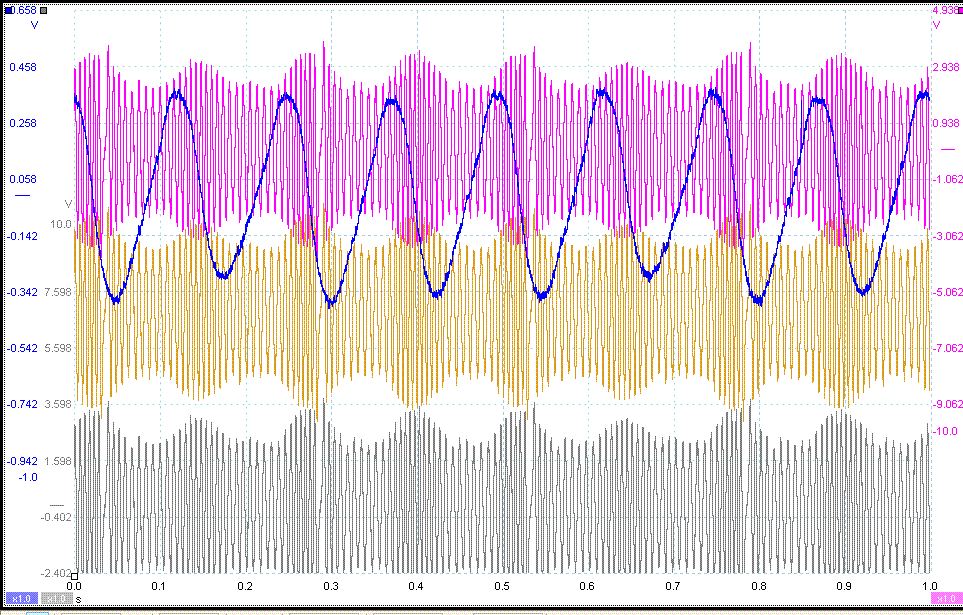
 t100csm.jpg (407 KB | )
t100csm.jpg (407 KB | ) t100csm.jpg (407 KB | )
t100csm.jpg (407 KB | )